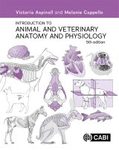Textbook Handbook / Manual
Out of Print
By: Alexandra Dugdale
392 pages, b/w photos, b/w illustrations, tables
![Veterinary Anaesthesia Veterinary Anaesthesia]()
Click to have a closer look
About this book
Contents
Biography
Related titles
About this book
A comprehensive yet reader-friendly textbook covering the key principles of veterinary anaesthesia for multiple species. Information is summarised in a simple format while providing the detail needed for those requiring advanced understanding. The easy-reference structure is designed for quick identification of and access to topics of interest.
The book includes troubleshooting for common problems and useful canine, feline and equine emergency drug dose charts. It is ideal for veterinary students and those preparing to take advanced qualifications in veterinary anaesthesia. Also features a useful reference for veterinarians in practice and advanced veterinary nurses and technicians.
Contents
Preface and Acknowledgements vii
About the authors viii
Chapter 1 Concepts of general anaesthesia 1
Chapter 2 Pre-operative assessment 4
Chapter 3 Pain 8
Chapter 4 Small animal sedation and premedication 30
Chapter 5 Injectable anaesthetic agents 45
Chapter 6 Quick reference guide to analgesic infusions 55
Chapter 7 Intravascular catheters: some considerations and complications 57
Chapter 8 Inhalation anaesthetic agents 64
Chapter 9 Anaesthetic breathing systems 76
Chapter 10 Anaesthetic machines, vaporisers and gas cylinders 93
Chapter 11 Anaesthetic machine checks 107
Chapter 12 Local anaesthetics 109
Chapter 13 Local anaesthetic techniques for the head: Small animals 118
Chapter 14 Local anaesthetic techniques for the limbs: Small animals 123
Chapter 15 Miscellaneous local anaesthetic techniques: Small animals 132
Chapter 16 Local anaesthetic techniques: Horses 135
Chapter 17 Muscle relaxants 141
Chapter 18 Monitoring animals under general anaesthesia 156
Chapter 19 Troubleshooting some of the problems encountered in anaesthetised patients 175
Chapter 20 Hypothermia: Consequences and prevention 179
Chapter 21 Blood gas analysis 182
Chapter 22 Lactate 192
Chapter 23 Fluid therapy 198
Chapter 24 Electrolytes 216
Chapter 25 Drugs affecting the cardiovascular system 225
Chapter 26 Shock 232
Chapter 27 Gastric dilation/volvulus (GDV) 244
Chapter 28 Equine sedation and premedication 247
Chapter 29 Equine heart murmurs 259
Chapter 30 Equine anaesthesia 260
Chapter 31 Equine intravenous anaesthesia in the fi eld and standing chemical restraint 274
Chapter 32 Donkeys 277
Chapter 33 Ruminants: Local and general anaesthesia 279
Chapter 34 Lamoids (formerly South American camelids) (llamas, alpacas, guanacos and vicunas) 299
Chapter 35 Pigs: Sedation and anaesthesia 302
Chapter 36 Rabbit anaesthesia 309
Chapter 37 Neonates/paediatrics 312
Chapter 38 Geriatrics 315
Chapter 39 Pregnancy and Caesarean sections 318
Chapter 40 Considerations for ocular surgery 322
Chapter 41 Orthopaedic concerns 325
Chapter 42 Renal considerations 327
Chapter 43 Hepatic considerations 330
Chapter 44 Some endocrine considerations 333
Chapter 45 Background to neuroanaesthesia for the brain 337
Chapter 46 Some cardiac considerations 341
Chapter 47 Some respiratory considerations 344
Chapter 48 Respiratory emergencies 347
Chapter 49 Cardiopulmonary cerebral resuscitation (CPCR) 359
Appendix 1 Canine emergency drug dose chart 366
Appendix 2 Feline emergency drug dose chart 368
Appendix 3 Equine emergency drug dose chart 370
Answers to self-test questions 371
Index 376
Tear out and keep: Accidents and emergencies procedure list
Customer Reviews
Biography
Alexandra Dugdale was until recently Head of Division of Veterinary Anaesthesia at the University of Liverpool, UK, and is currently studying for a PhD. She holds the RCVS Diploma in Veterinary Anaesthesia and the ECVAA Diploma in Veterinary Anaesthesia, as well as the PGCert (Learning and Teaching in Higher Education). She has over 10 years experience teaching veterinary anaesthesia.
Textbook Handbook / Manual
Out of Print
By: Alexandra Dugdale
392 pages, b/w photos, b/w illustrations, tables























![Épidémiologie Appliquée à la Lutte Collective Contre les Maladies Animales Transmissibles Majeures [Epidemiology Applied to the Collective Fight Against Major Transmissible Animal Diseases]](http://mediacdn.nhbs.com/jackets/jackets_resizer_medium/24/248788.jpg?height=150&width=105)











